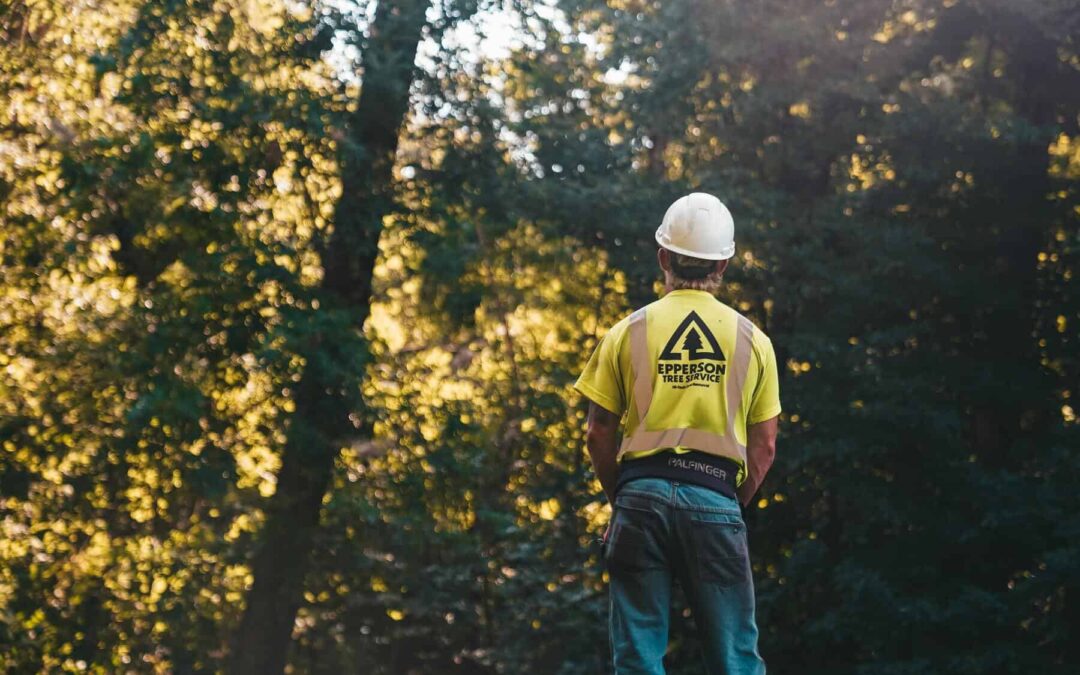Most homeowners notice only what’s visible in their trees, like green leaves or a full canopy. But what an arborist looks for during tree inspections in Fontana goes much deeper. Tree experts are trained to find hidden problems such as decay, weak structure, or root damage that the average person might miss.
Trees do not always show clear signs of trouble. It takes a trained professional to spot hidden issues quickly. Often there are no warning signs, no leaning, and no broken limbs. The tree may look healthy until it suddenly falls. This is why homeowners are often surprised when arborists find serious risks.
Professional tree experts see things homeowners miss. They know what danger looks like.
Root Zone Issues That Arborists Look For
Most tree problems start underground where homeowners can’t see them. Tree surgeons check the root zone first because healthy roots mean a stable tree. Bad roots mean the whole tree could fall down. Root problems kill more trees than anything else.
Signs of Root Rot and Instability
- Mushrooms near the trunk: When mushrooms grow around a tree base, the roots are rotting underneath. These fungi feed on dead root material.
- Soil cracks or lifting: Ground that pushes up or cracks around trees means root failure. The root system is losing its grip in the soil. Tree inspection experts know this often happens before trees fall over completely.
- Leaning after storms: Trees that tilt after wind events have damaged root systems. Healthy roots keep trees upright even in strong winds.
- Poor growth with good care: Trees that stay small despite water and fertilizer have root problems. Damaged roots can’t absorb nutrients properly.
Girdling Roots that Restrict Growth
Some roots grow in circles around the trunk instead of spreading out. These girdling roots choke the tree slowly like a tight belt. Professionals can spot the bulge where roots wrap around. This problem eventually kills the tree.
Soil Movement or Uplift that Signals Tipping Risk
When soil pushes up around a tree base, the roots are failing. Tree inspection experts look for cracks in the ground too. These signs mean the tree might tip over during the next windstorm.
Above-Ground Tree Structure Evaluation
Tree structural issues start with the trunk and move up to branches. Professionals check every part above ground for cracks, rot, and weak spots.
Trunk Health Assessment
- Crack evaluation: Small vertical cracks are normal bark growth. Deep splits that go into the wood signal tree trunk problems that need attention right away.
- Decay detection: Arborists tap trunks to listen for hollow sounds. Internal rot often shows no outside signs until it’s too late to save the tree.
- Bark damage assessment: Lawn mower cuts and string trimmer wounds create entry points for disease. Trees can heal small wounds but large damaged areas stay weak forever.
- Lean measurement: Professional tree service in Fontana determine if lean is natural growth or structural failure. Sudden lean after storms means immediate danger.
Branch and Crown Inspection
- Dead branch identification: Branch safety rules say dead limbs over two inches need removal. Larger dead branches over houses or cars require immediate attention from experts.
- Weak attachment points: Branches with bark growing between them and the trunk will fail. Tree experts spot these problem connections before they break.
- Crown density evaluation: Too many branches create wind resistance that can topple trees. Proper thinning improves light penetration and reduces storm damage risk.
- Growth pattern analysis: Tree care professionals predict where future problems will develop. They can see which branches will get too heavy or grow toward power lines.
Disease and Pest Identification in Fontana Trees
Diseased trees can spread problems to healthy ones nearby. Qualified arborists know what diseases and pests attack Fontana trees most often.
Common Tree Diseases
- Anthracnose in Sycamores: This fungus hits during wet springs and causes leaf spots. Arborists time treatments before symptoms appear for best results.
- Powdery mildew recognition: White coating on leaves looks like powder. Tree trimming infected branches helps stop spread to healthy parts of the tree.
- Root rot identification: Clay soil holds too much water and creates perfect conditions. Diseased roots turn black and soft underneath the ground level.
- Bacterial infections: These spread through pruning tools and insects between trees. Quick containment prevents loss of multiple trees in one yard area.
Pest Problems Specific to Fontana
- Aphid cycles: These tiny bugs multiply fast in spring weather. Natural predators like ladybugs control them better than chemical sprays in most cases.
- Bark beetle activity: Drought stress makes trees vulnerable to these boring insects. Healthy trees fight them off but weak ones need immediate attention.
- Scale insect identification: These look like small bumps on branches and leaves. Homeowners often think it’s a disease but tree trimming removes infected areas.
- Carpenter ant presence: Ants in tree trunks mean internal rot exists already. This often leads to tree removal and stump grinding for safety reasons.
Final Thoughts on Hiring an Arborist in Fontana
Homeowners who try DIY inspections miss dangerous problems that tree doctors catch easily. Tree disease often shows no obvious signs until it’s too late. An arborist has training to spot hidden issues.
Professional assessment includes a complete tree survey and arborist report with photos and recommendations. This written documentation helps homeowners plan budgets and prioritize safety issues.

Recent Comments